#that's its native habitat
Text
i only buy cassettes of albums on bandcamp when they cost the same amount as the digital album, which means i own more cassettes than you would think
#original#surprisingly often they are both ten dollars#the exception is chillhop mixes because i'm a fucking sucker#i would basically always rather have color vinyl BUT if it's some kind of lofi shit then it belongs on cassette#that's its native habitat
104 notes
·
View notes
Text
*casually posts this at the same time to further my agenda of growing native plants instead of grass and shitty ornamentals*


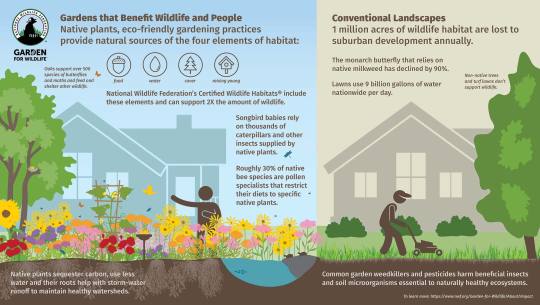


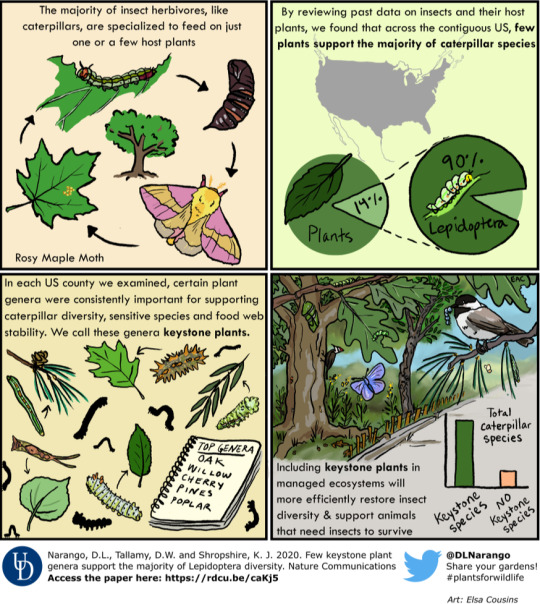

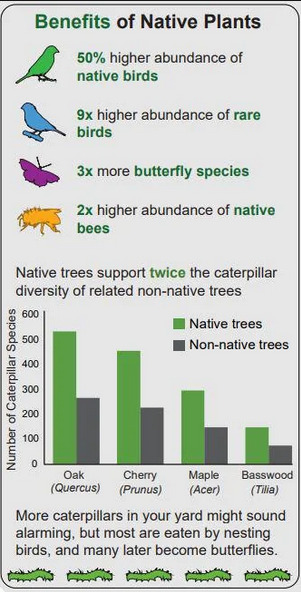

#gardening#water conservation#biodiversity#kill your lawn#native plants#native pollinators#pollinator garden#climate change#sustainability#environmental rehabilitation#habitat restoration#wildflowers#native flowers#animals#water crisis#didnt mean to post that grass one whoops. i think i skimmed it and wasnt thinking about it too much#but ig its true grass would be better than roads. lets just uh. make it native grass yaknow?
246 notes
·
View notes
Text
low light plants are a myth change my mind
#can they tolerate low light? sure. does your snake plant want to sit in a dark corner for its whole life? no#like its gonna be so much healthier with some direct sun or a grow light. yknow#also why does everyone think plants cant tolerate direct sun. like the plants that literally get hours of it in their native habitat#especially succulents. those bitches want soooo much direct sun#most of them anyway#ve.txt
3 notes
·
View notes
Text
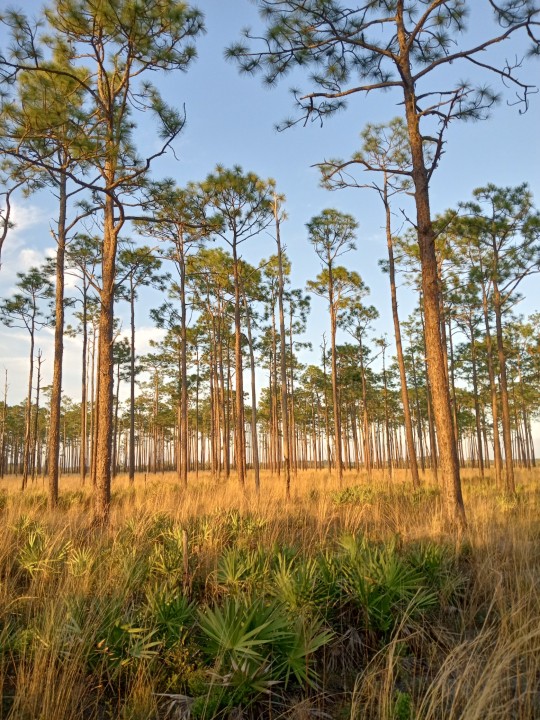

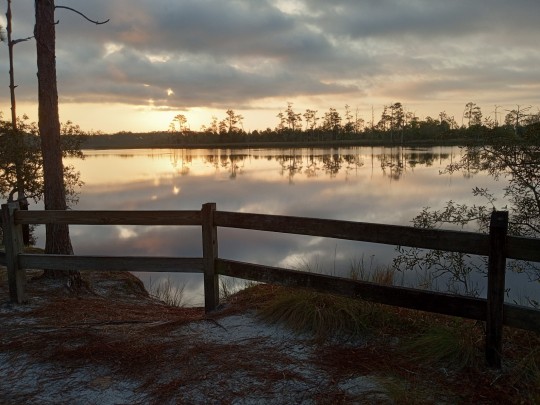
Florida is uniquely lovely!
We went camping this weekend, and had a great time, and saw some of the peak of natural Florida!
This pine forest needs regular fires to release seeds and refresh the forest, so you see charred trunks from the controlled burns everywhere you go. It's a beautiful reminder of the natural cycles around us! I love it so much!!
Also these tiny red sundew plants are carnivorous and were all along the marshy bits of the path :)
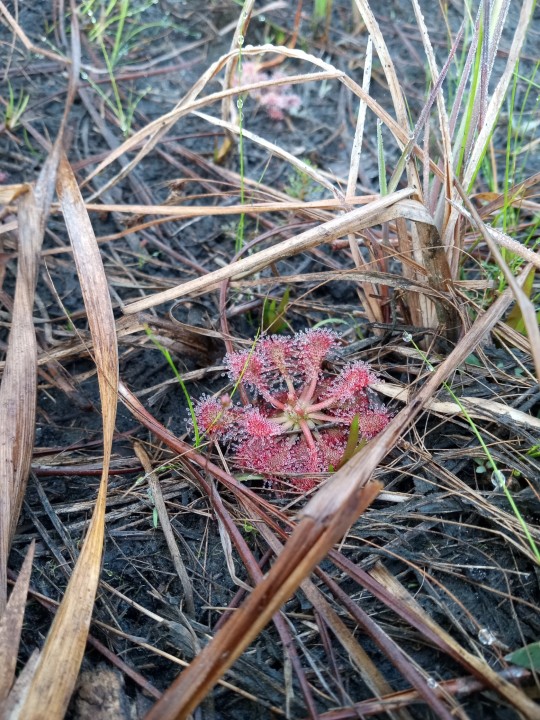
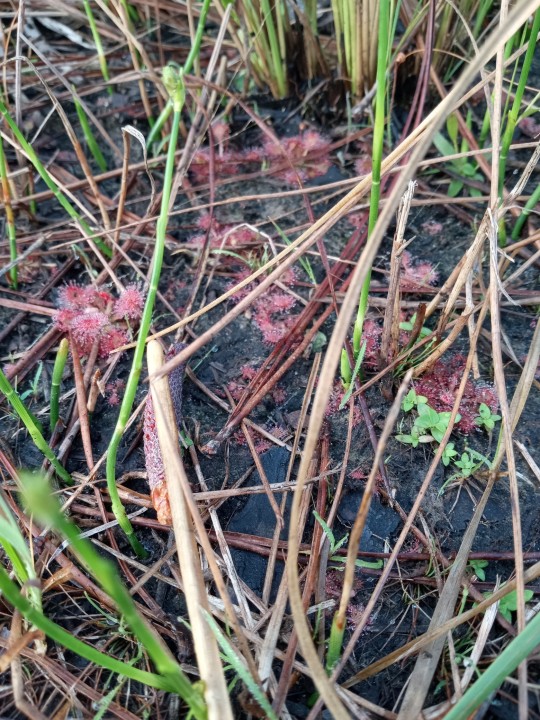
#florida#lori chat#forget disney and the beaches pine forests are where its AT#but for real the native ecology of this state is so goddamn breathtaking yhat it kills me when it all gets mowed over for more disney#tourists and people moving here please appreciate what a wonderful place this is!#Anyways this sort of longleaf pine forest is my favorite habitat in the WORLD. the BEST.
10 notes
·
View notes
Text
Why are people in NY so mean...I'm out of my native habitat
#im from the midwest where we apologize for everything even if its not our fault lmao#nobody apologizes for SHIT here im not in my native habitat#ny#new york#new york state#midwest#culture
21 notes
·
View notes
Text

so i got into making deviantart stamps. happy monday
#majima melon monday#big up to my good friend wolfy who im a proud hashtag stamp disciple of#also mobile crushed this fucking image wow wee its a lot better in its native habitat (desktop)#rgg
1 note
·
View note
Text



“Can’t always account for poor taste.”
He says as if he wouldn’t crush your windpipe in an instant if you dared to insult Yoichi’s appearance. The only person allowed to insult his brother is him, and the only one allowed to be anywhere near his brother is himself—
#ah yes a possessive Ichiro in its native habitat#simvlacrums#♛ ; ᵗʰᵉ ᵒˡᵈ ᵍᵒᵈˢ ᵃʳᵉ ᵈᵉᵃᵈ (.Ichirō)#✧ ; ᵈᵃˢʰ (.dash commentary)
2 notes
·
View notes
Text
"In one of Africa’s last great wildernesses, a remarkable thing has happened—the scimitar-horned oryx, once declared extinct in the wild, is now classified only as endangered.
It’s the first time the International Union for the Conservation of Nature (IUCN), the world’s largest conservation organization, has ever moved a species on its Red List from ‘Extinct in the Wild’ to ‘Endangered.’
The recovery was down to the conservation work of zoos around the world, but also from game breeders in the Texas hill country, who kept the oryx alive while the governments of Abu Dhabi and Chad worked together on a reintroduction program.
Chad... ranks second-lowest on the UN Development Index. Nevertheless, it is within this North African country that can be found the Ouadi Rimé-Ouadi Achim Faunal Reserve, a piece of protected desert and savannah the size of Scotland—around 30,000 square miles, or 10 times the size of Yellowstone.
At a workshop in Chad’s capital of N’Djamena, in 2012, Environment Abu Dhabi, the government of Chad, the Sahara Conservation Fund, and the Zoological Society of London, all secured the support of local landowners and nomadic herders for the reintroduction of the scimitar-horned oryx to the reserve.
Environment Abu Dhabi started the project, assembling captive animals from zoos and private collections the world over to ensure genetic diversity. In March 2016, the first 21 animals from this “world herd” were released over time into a fenced-off part of the reserve where they could acclimatize. Ranging over 30 miles, one female gave birth—the first oryx born into its once-native habitat in over three decades.
In late January 2017, 14 more animals were flown to the reserve in Chad from Abu Dhabi.
In 2022, the rewilded species was officially assessed by the IUCN’s Red List, and determined them to be just ‘Endangered,’ and not ‘Critically Endangered,’ with a population of between 140 and 160 individuals that was increasing, not decreasing.
It’s a tremendous achievement of international scientific and governmental collaboration and a sign that zoological efforts to breed endangered and even extinct animals in captivity can truly work if suitable habitat remains for them to return to."
-via Good News Network, December 13, 2023
#chad#abu dhabi#north africa#rewilding#endangered species#conservation#zoology#conservation biology#oryx#good news#hope#texas#big game#animals#endangered#environmentalism#environmental science#zoo#zoos#zoo animals
24K notes
·
View notes
Text
"How can you claim they are friendly? They have never been registered." "All spacefaring organisms are harmless. If they weren't, they could have defended their native habitat. After all, why would an apex predator need to expand its territory into space? Let them land and you'll see."
4K notes
·
View notes
Text
i simply think that if sam had crashed with the yellowjacket girls, it would’ve fixed him. let him run the cult with lottie! hard to feel bad about demon blood when you’ve already done feral teenage cannibalism
#sam would fit in well with deranged teenage girls bc he is one actually#give the boy an antler crown and wild hallucinogens! it’s like releasing an animal into its native habitat#welcome to the blog we’re not gonna get any better analysis than this
1 note
·
View note
Text
the cringe nihilistic "personal impact means nothing so why even try" vs the chad "or i could be one of the only people in my apartment complex that grows native plants and lets native animals live in them in what is otherwise a desolate hellscape of grass"
#sometimes personal impact does actually matter#sometimes YOU'RE the only one who gives a shit#but it starts with you. and then other people catch on.#by seeing you have a good time w plants and native wildlife other ppl wanna start doing it too#the experience is too rewarding not to want to. its also really meditative taking care of a garden.#so far ive seen bats hummingbirds i had a wasp nest up here and they never stung me we like just *got* eachother yknow#i literally had to reach over them to water plants and they still never stung me. ive had mason bees. ive obviously had honey bees and#bumble bees. i even saw a fuckin tree frog. its so fun. theres always birds on my balcony. theres a bird on my blacony rn w eggs#im making my own lil micro habitat over here sdjfsjvhgd
2 notes
·
View notes
Text
In the 1930s, the US put lots of dams along the Columbia River to provide power and prevent flooding. As a side effect, it destroyed the salmon populations of the upper Columbia River and its tributaries, because salmon have to be able to migrate out to the ocean and back. (They live most of their lives in the ocean, but come upriver to spawn.) The local tribes have been trying to figure out a way of restoring salmon habitat ever since.
The Biden administration just committed $26 million to build infrastructure that will allow fish to bypass dams, and also help with the tribal studies on the best way to reintroduce salmon to the area. And the programs they've agreed to fund were developed by the tribes, so native voices will have a strong say.
4K notes
·
View notes
Text
One of the running themes in "humans are space orcs" circles is the idea that humans will bond with anything. I can think of plenty of stories of humans making friends with wild animals, alligators, predators, creatures that aliens would immediately recognize as too dangerous for contact. But I was reading a story about two orangutans released back into the wild today and there's a certain element to that story I haven't seen so often: humans will bond with animals regardless of whether the bond is reciprocal.
For every story of a human making friends with some unlikely creature, there are dozens of stories of conservation specialists tranquilizing animals, tending to their wounds or illness, and releasing them because they're too dangerous to handle consciously. Stories of tagging birds of prey and timber wolves and Siberian tigers. Fat Bear Week? Any of those bears would rip your face off without hesitation. But they're round and fluffy and intimidating and beautiful and we love them even though they hate us. We make an effort to protect our monsters, because we love our monsters.
Imagine an alien planet that's experiencing ecological degradation. Their flora is dying, and they can't figure out why. And, offhandedly, in a diplomatic mission, an allied planet mentions that humans have successfully reversed similar devastation on Earth. So they reach out and Earth sends some experts to check it out. And what do they suggest? Reintroducing an apex predator that used to be a scourge against alien settlements. The species still exists in other regions of the planet, but it is slowly disappearing outside of its native habitat.
The aliens are askance. They've told bedtime stories to their young of these creatures: how they tear apart their prey, how they've eaten their organs and rip apart their homes. Some suggest that it's a trick—that the humans are trying to prompt them into destroying themselves.
But there are many alien cultures on this planet, with many different stories and some of them agree. The world watches in anticipation as the humans help their predators. They seek them out, these fearless otherworlders, putting them to sleep and tending their wounds. They keep track of the beasts, not to harm them, but to protect them.
At first the doomsayers' prophecy seems to come true. The predators devour prey animals like a feast, like a slaughter to people who have never been so close to the circle of life. But then, slowly, not over months but over years, comes change. The prey no longer eat the leaves and buds of every tree; some are left to bloom and fall. The refuse rots in the dirt, and the floods cease as the soil grows thick with compost and rotted bone, thick enough to hold water. The shapes of rivers change to protect their surroundings from the rain. The pollinators rebound.
Decades later, other cities and nations begin to accept this human myth of "conservation." Champions arise, alien champions, now, who go into the depths of the wilderness and the seas to protect those predators from the apathy of time.
Not all of them make it. This is something else the humans teach. Sometimes the tranquilizers are not enough. Sometimes the timing is wrong. Sometimes accidents happen. And when they do, the aliens look to humans for an answer for why they should protect these creatures who have killed those they love?
"Because they knew the risks," the humans say. "Because they would be the first to speak to save them. Because they taught you to see the beauty in the wild and you must not close your eyes."
So, despite themselves, they don't.
#humans are space orcs#earth is space australia#humans are space australians#this wasn't originally about steve irwin#but it turned into being about steve irwin#i'm crying about stingrays now#it's fine
6K notes
·
View notes
Text
Things Biden and the Democrats did, this week #14
April 12-19 2024
The Department of Commerce announced a deal with Samsung to help bring advanced semiconductor manufacturing and research and development to Texas. The deal will bring 45 billion dollars of investment to Texas to help build a research center in Taylor Texas and expand Samsung's Austin, Texas, semiconductor facility. The Biden Administration estimates this will create 21,000 new jobs. Since 1990 America has fallen from making nearly 40% of the world's semiconductor to just over 10% in 2020.
The Department of Energy announced it granted New York State $158 million to help support people making their homes more energy efficient. This is the first payment out of a $8.8 billion dollar program with 11 other states having already applied. The program will rebate Americans for improvements on their homes to lower energy usage. Americans could get as much as $8,000 off for installing a heat pump, as well as for improvements in insulation, wiring, and electrical panel. The program is expected to help save Americans $1 billion in electoral costs, and help create 50,000 new jobs.
The Department of Education began the formal process to make President Biden's new Student Loan Debt relief plan a reality. The Department published the first set of draft rules for the program. The rules will face 30 days of public comment before a second draft can be released. The Administration hopes the process can be finished by the Fall to bring debt relief to 30 million Americans, and totally eliminate the debt of 4 million former students. The Administration has already wiped out the debt of 4.3 million borrowers so far.
The Department of Agriculture announced a $1 billion dollar collaboration with USAID to buy American grown foods combat global hunger. Most of the money will go to traditional shelf stable goods distributed by USAID, like wheat, rice, sorghum, lentils, chickpeas, dry peas, vegetable oil, cornmeal, navy beans, pinto beans and kidney beans, while $50 million will go to a pilot program to see if USAID can expand what it normally gives to new products. The food aid will help feed people in Bangladesh, Burkina Faso, Burundi, Chad, Democratic Republic of the Congo, Djibouti, Ethiopia, Haiti, Kenya, Madagascar, Mali, Nigeria, Rwanda, South Sudan, Sudan, Tanzania, Uganda, and Yemen.
The Department of the Interior announced it's expanding four national wildlife refuges to protect 1.13 million wildlife habitat. The refuges are in New Mexico, North Carolina, and two in Texas. The Department also signed an order protecting parts of the Placitas area. The land is considered sacred by the Pueblos peoples of the area who have long lobbied for his protection. Security Deb Haaland the first Native American to serve as Interior Secretary and a Pueblo herself signed the order in her native New Mexico.
The Department of Labor announced new work place safety regulations about the safe amount of silica dust mine workers can be exposed to. The dust is known to cause scaring in the lungs often called black lung. It's estimated that the new regulations will save over 1,000 lives a year. The United Mine Workers have long fought for these changes and applauded the Biden Administration's actions.
The Biden Administration announced its progress in closing the racial wealth gap in America. Under President Biden the level of Black Unemployment is the lowest its ever been since it started being tracked in the 1970s, and the gap between white and black unemployment is the smallest its ever been as well. Black wealth is up 60% over where it was in 2019. The share of black owned businesses doubled between 2019 and 2022. New black businesses are being created at the fastest rate in 30 years. The Administration in 2021 Interagency Task Force to combat unfair house appraisals. Black homeowners regularly have their homes undervalued compared to whites who own comparable property. Since the Taskforce started the likelihood of such a gap has dropped by 40% and even disappeared in some states. 2023 represented a record breaking $76.2 billion in federal contracts going to small business owned by members of minority communities. This was 12% of federal contracts and the President aims to make it 15% for 2025.
The EPA announced (just now as I write this) that it plans to add PFAS, known as forever chemicals, to the Superfund law. This would require manufacturers to pay to clean up two PFAS, perfluorooctanoic acid and perfluorooctanesulfonic acid. This move to force manufacturers to cover the costs of PFAS clean up comes after last week's new rule on drinking water which will remove PFAS from the nation's drinking water.
Bonus:
President Biden met a Senior named Bob in Pennsylvania who is personally benefiting from The President's capping the price of insulin for Seniors at $35, and Biden let Bob know about a cap on prosecution drug payments for seniors that will cut Bob's drug bills by more than half.
#Thanks Biden#Joe Biden#jobs#Economy#student loan debt#Environment#PFAS#politics#US politics#health care
742 notes
·
View notes
Text
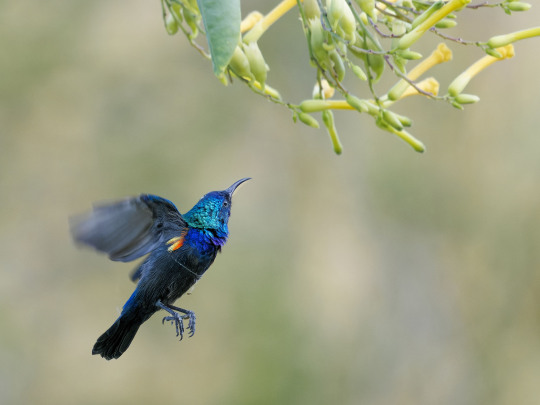

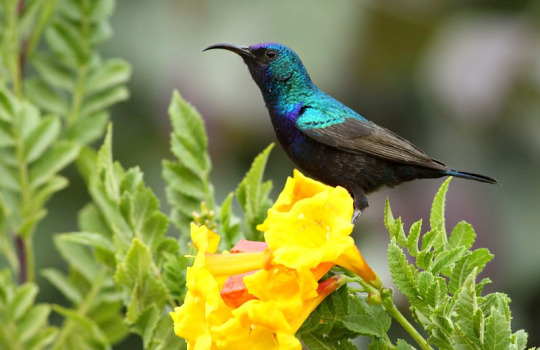
The Palestine Sunbird Persists
The Palestine sunbird, also known as the orange-tufted sunbird (Cinnyris osea) is the national bird of Palestine, and often seen as a symbol of resistance and hope. This species occurs in dry climates, particularly desert, scrubland, and savannahs, but can also be found in orchards and gardens where flowers are abundant. In addition to the Levant, C. osea occurs throughout the southwest cost of Saudia Arabia and the coasts of Yemen and Oman in the south.
C. osea is a small bird, 8 to 12 cm (3.1-4.7 in) long with a wingspan of only 14 to 16 cm (5.5-6.2 in). Males weigh on average 7.6 g (0.26 oz) and females are slightly smaller, at about 6.8 g (0.24 oz). Males are quite easy to identify due to their striking plumage; their feathers are iridescent, appearing dark until they shimmer glossy blue or green, with orange tufts at the side of the breast. In contrast females are fairly drab; grey-brown with a lighter underside. The beaks of the Palestine sunbird are also noted for their distinctively long and curved, which they have developed to efficiently feed on nectar.
Although not directly part of the hummingbird family, the Palestine sunbird shares many similarities with the group. Its diet consists of nectar, and is supplemented with insects. Their tongues are long, and brush-like, and the shape of their beak allows them to reach down to the base of the flower. For flowers that are , they will use their sharp beaks to pierce the side and access the nectar directly. All this is done at very high speeds, but unlike hummingbirds the Palestine sunbird cannot hover in place, and must land in order to feed. Because of their primary reliance on nectar, the orange-tufted sunbird is an important pollinator in its native region. Adults are rarely predated upon, but eggs and young are often targets for lizards, snakes, and birds of prey.
Reproduction begins in June, and continues through October. Males establish and defend territories, and court females by singing to attract a potential mate, then chasing her until she perches to signal her acceptance. Following the pairing, the two construct a purse-like nest, sometimes with a porch-like structure, that hangs from a branch. In this nest, 1-2 eggs are laid, and are incubated primarily by the female, while the male provides her food. The eggs take 13 to 14 days to hatch, and chicks are taken care of by both parents for an additional 14 to 21 days. Individuals can live up to 5 years in the wild.
Conservation status: The Palestine sunbird has a large range and population, and is thus considered Least Concern by the IUCN. Its primary threat is habitat loss due to agriculture and urban development.
If you send me proof that you’ve made a donation to UNRWA or another organization benefiting Palestinians, I’ll make art of any animal of your choosing.
Remember, the donation can be in any amount– every dollar counts!
Photos
Jorrit Vlot
Dula Alhashimi
Rana Hijawi
#Palestine sunbird#Passeriformes#Nectariniidae#sunbirds#perching birds#birds#deserts#desert birds#scrubland#scrubland birds#savannah#savannah birds#urban fauna#urban birds#middle east#animal facts#biology#zoology#ecology#free palestine
864 notes
·
View notes
Text
I've been doing a lot of volunteer fieldwork with these guys recently so I thought I might as well do an infodump about them here.
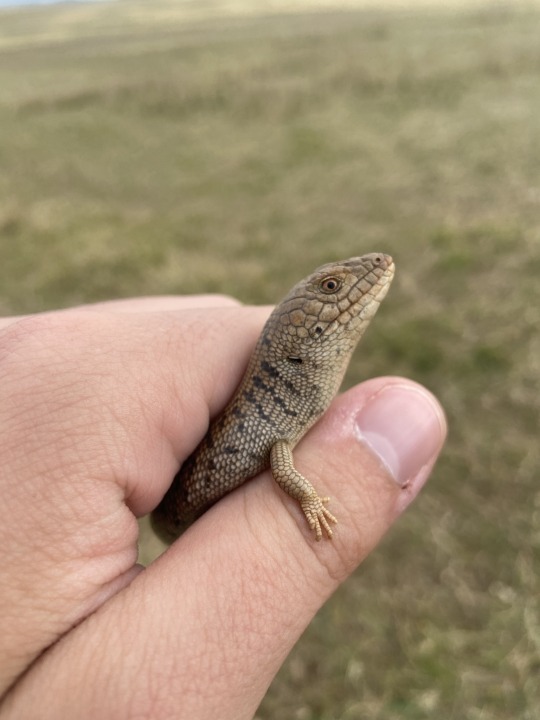
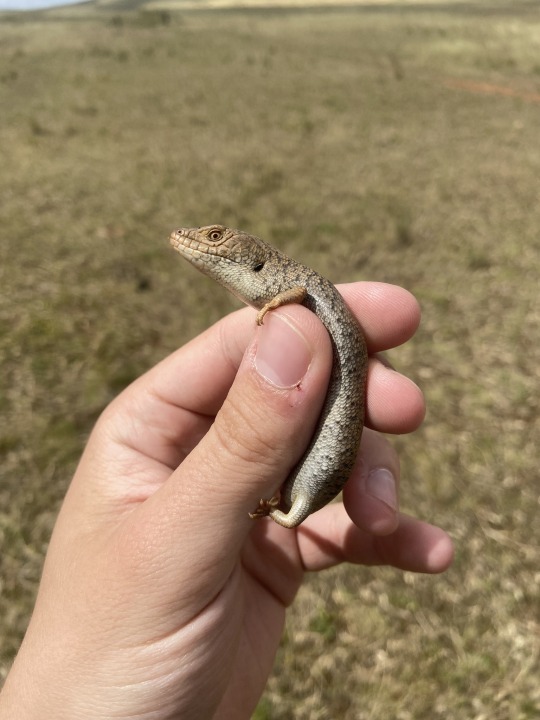
The pygmy bluetongue skink (Tiliqua adelaidensis) is one of the most unique and unusual members of the Tiliqua genus, which includes the true bluetongues as well as the sleepy lizard/shingleback. However, the pygmy bluetongue actually lacks the blue tongue the group is named after, having a pink tongue instead! As its scientific name suggests, it is quite a range restricted species, being found only in open grasslands north of Adelaide, South Australia, as far north as Peterborough. Historically they ranged more extensively across the Adelaide Plains, as far south as Marion, but due to the destruction of suitable habitat they now occur no further south than Kapunda.
While most bluetongues are notable for their large size amongst skinks, with several species regularly exceeding 30 cm in length, the pygmy bluey lives up to its name by measuring a measly average of 9 cm long from snout to vent. This is actually still a fair size compared to the average skink, but it's miniscule by bluetongue standards. Even more notable than their size however are their habits, for they are the only species of lizard that is specialised to live exclusively in old spider burrows! The burrows of both trapdoor and wolf spiders are used, but trapdoor burrows are preferred in most instances.

Pygmy bluetongues spend the majority of their lives within these spider burrows, leaving only to defecate, seek out mates and disperse. The average length of time a lizard spends in a particular burrow is highly dependant on the individual - some are sedentary and spend many years within a single burrow, while others will move around fairly frequently. As well as places to shelter and raise their young (they have parental care, it's very cute), pygmy bluetongues also use the burrows as ambush sites, waiting at the top for suitable prey, usually a mid-sized arthropod, to stray close enough for them to quickly dart out and drag them into the depths.
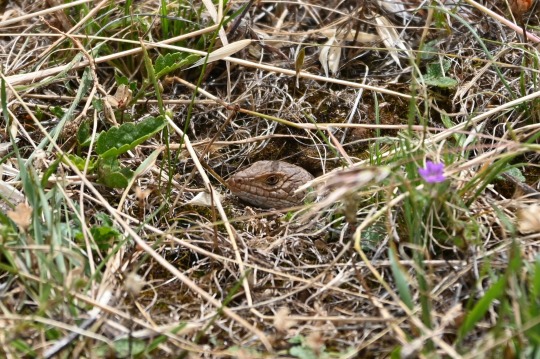
but here's the ambusher
The chief natural predators of pygmy bluetongues are raptors and brown snakes, and sheltering in the burrow is the main defence against both of these threats. Their burrows are often wide enough for a brown snake to enter, but not wide enough for them to open their mouths in - this means all the brown snake usually gets by pursuing a sheltering pygmy is an angry lizard attacking its face, forcing it to retreat.
The lazy lifestyle of the burrow-stealing pygmy bluetongues is certainly unique, and also explains why they have been such an elusive species since they were first discovered by Western scientists in the 1860s. Rarely seen or collected, their habit of inhabiting spider burrows remained undiscovered for the longest time, and by the 1960s they had become so hard to find that they were believed to be extinct. That was until, in 1992, a pygmy bluetongue was found inside the stomach of a roadkill brown snake by amateur herpetologist Graham Armstrong, confirming their status as a Lazarus of the lizard world.
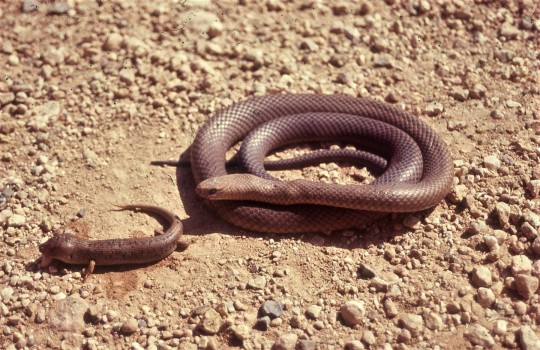
The historic rediscovery of the pygmy bluetongue
(Image credit: Graham Armstrong)
Our previous assumptions of extinction were fortunately premature, but the pygmy bluetongue skink is in serious trouble nonetheless. While they are able to live in a variety of different grassland types, both native and exotic, the extensive modification of their entire distribution through cereal cropping and urbanisation has led to their populations becoming very small and fragmented, giving them a ranking of Endangered on the IUCN Red List. Almost all of these populations are on private land (often grazed by sheep), which makes protecting and/or studying them particularly difficult and complex.
However, when it comes to future threats to the species, climate change is easily the most worrying. As Australia becomes ever hotter and drier, their small remaining distribution is likely to become largely unsuitable, threatening the existence of the entire species. To combat this, researchers are currently investigating the viability of translocating populations further south to areas with cooler climates, providing a safeguard if they do indeed disappear from their remaining natural distribution.
But how do you study a lizard that lives exclusively in small spider holes? Well, if you want to catch them, there's only one tool for the job - the humble fishing rod. Not any special fishing rod either, just a regular rod with a poor mealworm shoddily tied to the end. David Attenborough kindly demonstrates the technique in Life in Cold Blood, although in his case the lizard was steadfast in remaining in the burrow!

the sacred tool of the mighty lizard fishermen
returned to their abode
Two additional Fun Pygmy Facts:
Fun Pygmy Fact #1 - The closest living relative of the pygmy bluetongue is the sleepy lizard!
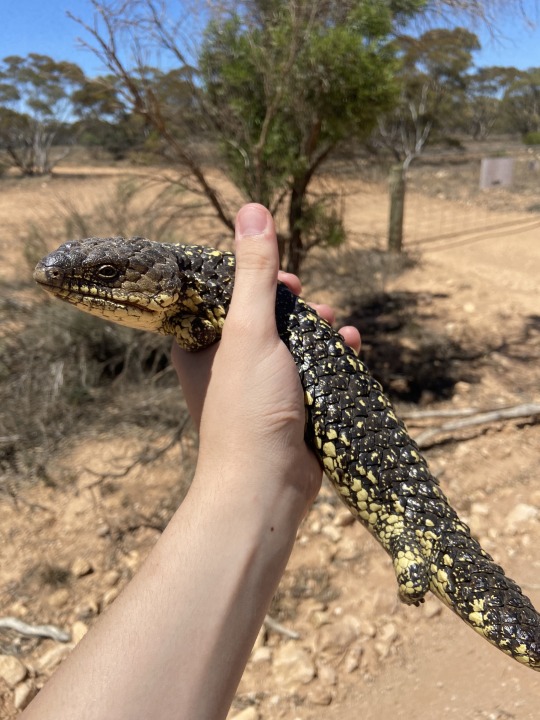
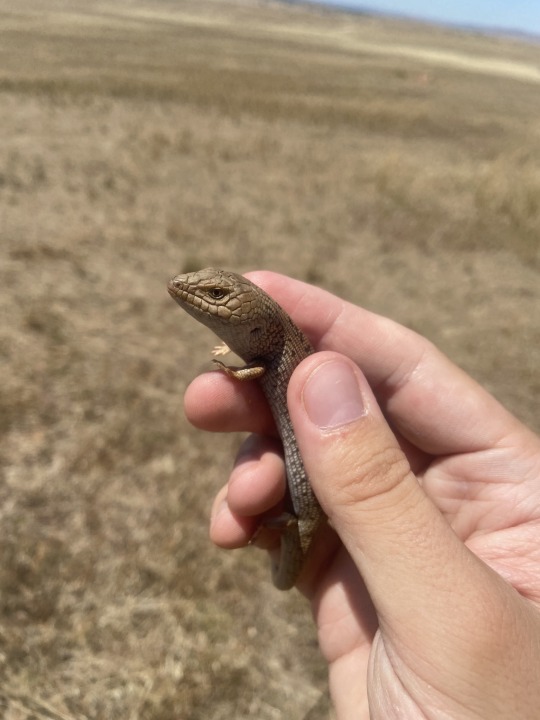
cousins!
Fun Pygmy Fact #2 - Wooden artificial burrows purpose-made for pygmy blueys have proven effective, and the lizards inhabiting them even tend to be in better body condition than those in natural burrows!

#australian wildife#wildlife#reptile#lizard#skink#tiliqua#bluetongue#animal facts#herpetology#natural history#fieldwork#infodumps#my stuff
858 notes
·
View notes